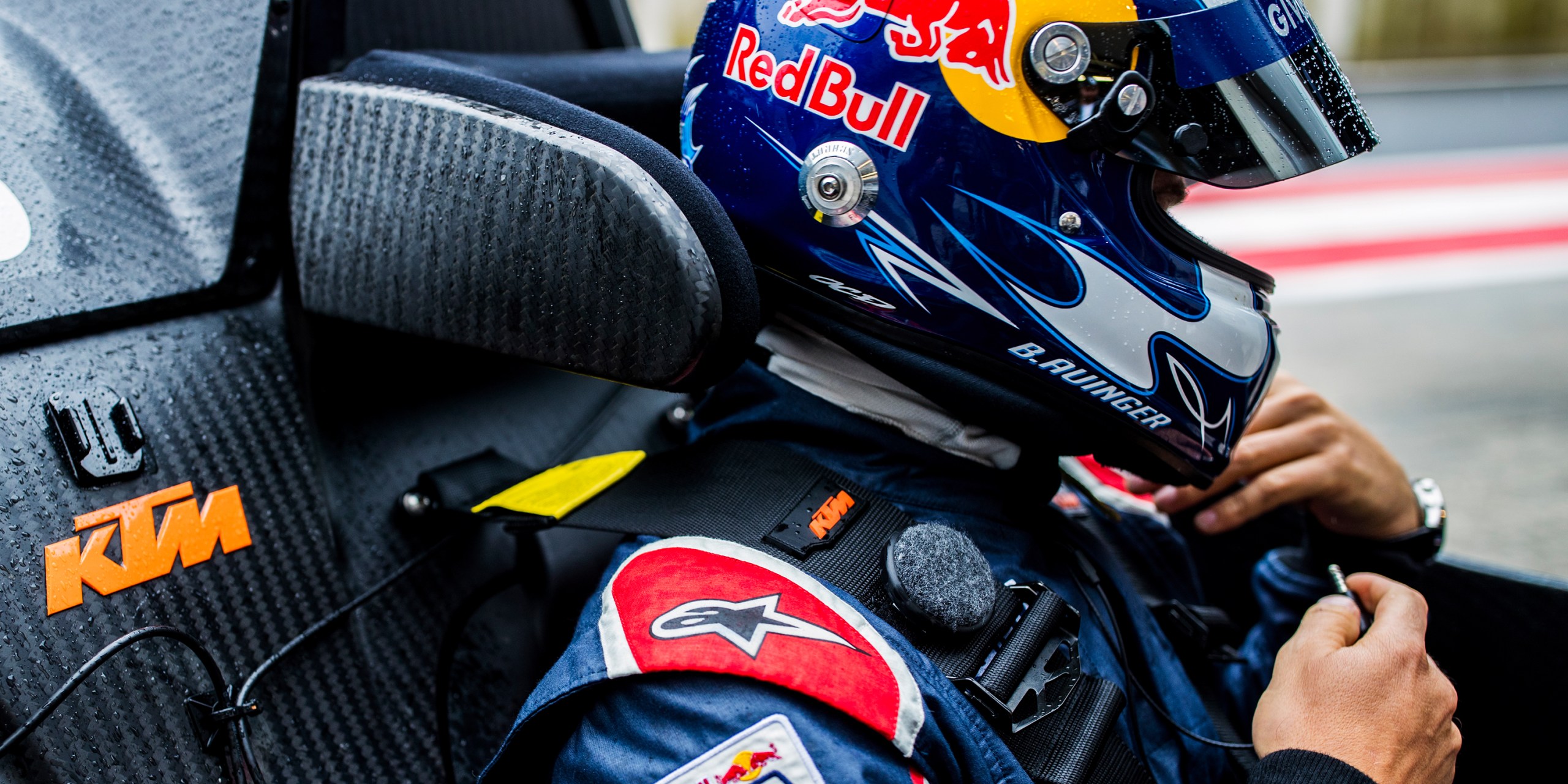Over the past decade, the action-cam renaissance has strapped us into cockpits, perched us on tops of mountains, and sat us behind the wheel of countless supercars. But as thrilling as the pictures may be, there’s been something missing – something that stands in the way of our own adrenaline spiking and heart racing.
Though we can see the world through their eyes, we haven’t been able to hear the action as though we’re right there with top athletes and intrepid adventurers. Those who have tried to record the haunting silence of skiing on fresh powder, the lighting fast clicking of gears, or the roar of an engine inside an open-air cockpit have, by and large, been treated to little more than the deafening roar of wind.
That may be about to change.
The X Mic is poised to put you smack in the middle of the wildest action on Earth.
For the past two years, dreamers from Red Bull Media House and top engineers from acclaimed audio brand Jabra (makers of our favorite true wireless headphones) have been secretly developing a new microphone. It’s a tiny, puck-shaped device that can attach to just about anything, and it has been explicitly designed to deliver unprecedented levels of sonic intimacy, even the windiest outdoor environments.
They call their action cam of audio the X Mic, and it’s poised to put you smack in the middle of the wildest action on Earth.
“This is a dream,” says Andreas Gall, Red Bull Media’s chief innovation officer, who also spent years working as a professional sound engineer. “In the past when we used the microphones integrated in the action cameras we always had to accept a compromise, or we had to ban the audio from the production. My vision, and the dream, is to get the best signal out and put it into the production as a pure emotion.”
The action cam of audio
Designed from the ground up, the X Mic uses a mixture of physical elements and cutting-edge digital signal processing (DSP) to remove unwanted audio from recordings.
Every aspect of the microphone was carefully considered. It’s round, so wind doesn’t get caught in any edges, and it uses a special blend of fabrics to create as great a wind guard as possible. It’s also made to be lightweight and Bluetooth enabled, allowing athletes and adventurers to clip it easily to numerous places on their body, inside their helmet, or on their gear.

Because of its superb design and digital processing, where traditional microphones pick up nothing but the wind, the X Mic allows listeners to get a more intimate audio image of, say, a racecar zooming down a wet track at hundreds of miles an hour — an actual test video provided to Digital Trends by the development team.
“For us it’s about emotion in content that people may not normally see,” says Jonathan Pennington, Jabra’s senior director of brand and marketing creation. “If you watch a film or a video without sound, you miss so much of that emotion.”
Because it’s small and lightweight, producers can even use several microphones to capture specific aspects of the sound, akin to the way multiple action cams are used in productions today.
Engineered for extremes
The X mic is engineered to be used in the most extreme, difficult-to-hear environments, but it could end up becoming a sound star outside of sports. After all, the vast majority of action cam owners aren’t using them to record insane feats of athleticism or document their fastest lap times.
“The starting point was in the extreme sports arena because that’s really the best testing ground for how the microphone will work in any condition,” adds Pennington, “You see the birth of action cameras in extreme sports, but I see people walking the dog with them.”
Engineered to be used in the most extreme, difficult-to-hear environments.
There are other places the technology may show up in the future, too. The microphone has the potential to be used for advanced communication systems — say, as part of an intercom-style system for those on windy mountainsides. In the future, Jabra says that users may even be able to use the X Mic to form what the company calls a mesh network, allowing users to quickly and easily choose between and balance various audio streams for both studio-style and outdoor productions.
But even if the device looks just as it does today when it finally hits the market — the current iteration of the X Mic is nearly production ready, but Jabra tells us a publicly available version will not be released for a while — the team believes there are countless interesting ways the technology could be used by consumers, and that outdoor videos will be all the better for it.
The first step in a better-sounding future
Gall says that numerous teams at Red Bull have been rearing to use the superb new mic. That excitement began early in the collaboration, when Jabra shared some of its first tests with a prototype of the X Mic.
“An engineer inside Jabra sent us a little clip, and he was on a [motor]bike,” says Gall, “He’s got the mic on his bike and he started with about 20 km per hour, and it was a clear signal. Then it was 50 km per hour, and it was a clear signal. Then it was 80 km per hour, and it was still a clear signal. It was like, ‘Holy shit!’”
It was so good, Gall thought the engineer who sent it might be pulling his leg.
“They sent us this little microphone and we did the same test, because we didn’t believe it,” he says, “We had the same experience. It was such a huge motivation for us to go on.”
Countless iterations and two years later, the X Mic has the potential to change the way that we hear outdoor audio in the future. And with many of the strides made by the development team trickling down to other Jabra products in the future, this tiny puck-shaped mic may well be a cornerstone for the next generation of audio products.
For its part, Jabra seems excited to continue to develop its cutting-edge device and to create increasingly better versions of the X Mic for Red Bull’s creators (and eventually mainstream consumers) down the line. But even when the first X Mic technology hits the streets, both teams are dead set on continuing to push the future of outdoor audio forward.
“We’ve not stopped [working], even today.” says Pennington,” we’ve gotten to a solution that we believe delivers exceptional audio quality. But can it get better? Of course it can.”





